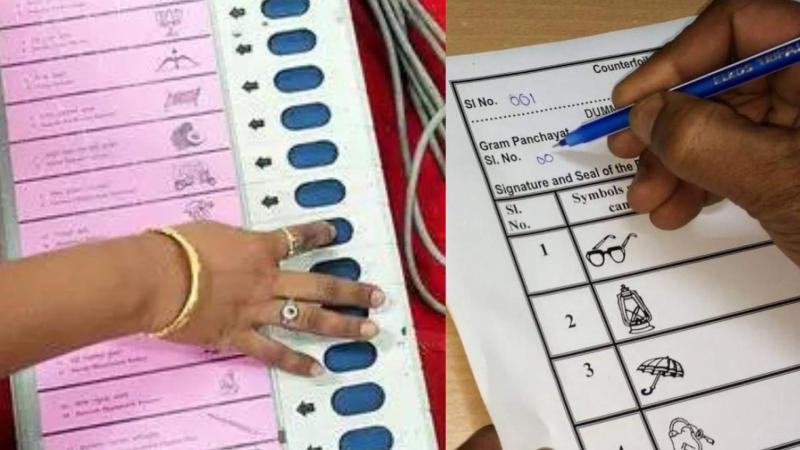Published 17:24 IST, November 27th 2023
EVMs vs ballot papers: Which is better for India?
India's electoral shift to EVMs enhances efficiency, but concerns persist on security and transparency.

Difference between ballot paper and EVM: India's electoral process has significantly evolved with the introduction of the Electronic Voting Machine (EVM) system, replacing traditional ballot papers since its inception in 1977. Despite consistent assertions from the Election Commission of India (ECI) regarding the tamper-proof nature of these machines, concerns about their security and reliability persist.
Initially developed by public-sector undertakings ECIL and Bharat Electronics Limited (BEL), EVMs faced legal challenges early on. The Supreme Court ordered the first trial in Kerala's 1982 general election due to the absence of a specific law governing their use. However, the Representation of the People Act was later amended in 1989 to enable the usage of EVMs.
Evolution of EVM
Over the years, EVMs have undergone significant evolution, with variations like the Control Units (CU) and Balloting Units (BU) accommodating more candidates in different versions like M1, M2, and M3. According to the ECI, these machines have contributed to enhancing transparency and efficiency in the electoral process, including provisions for visually impaired voters.
Addressing demands for increased transparency, the Voter Verifiable Paper Audit Trail (VVPAT) was introduced. This addition allows voters to verify their votes by printing a slip displaying candidate details for seven seconds before being secured in a drop box, augmenting confidence in the voting process.
EVMs have been widely utilised in India, employed in all elections since 2000, including Lok Sabha and State Legislative Assembly elections, totaling over 315 crore votes cast till date.
Despite some initial legal challenges and concerns about manipulation, allegations of EVM tampering, notably during the 2014 Indian polls by Syed Suja, were dismissed. The EVMs have become a critical aspect of the country's democratic system, enhancing transparency and efficiency in the electoral process.
EVM vs ballot, the debate
Understanding the differences between EVMs and traditional ballot papers sheds light on the evolution of India's electoral mechanisms.
Ballot papers involve physically marking a paper to indicate a voter's choice, while EVMs allow electronic voting by pressing a button next to the chosen candidate's symbol on the Balloting Unit. Notably, EVMs are praised for their accuracy, efficiency in tallying votes, and reduced physical space requirement compared to ballot papers.
There are several distinctions between EVMs and ballot papers:
- Accuracy and efficiency: EVMs are praised for their accuracy and speed in tallying votes. They minimise errors that can occur during manual counting, reducing the time required to declare election results.
- Secrecy of voting: While both systems ensure the secrecy of votes, EVMs might offer slightly more privacy as the voter's choice is electronically registered without revealing it to others.
- Space and environmental impact: EVMs take up less physical space for storage compared to large volumes of ballot papers. Additionally, they are more environmentally friendly as they reduce paper usage.
- Vulnerability to manipulation: Ballot papers, though more tangible, are susceptible to various forms of tampering or malpractice, such as ballot stuffing or miscounting. EVMs, while considered secure, have faced criticism regarding their susceptibility to hacking or electronic manipulation, as stated earlier.
- Accessibility and usability: EVMs are designed to be user-friendly, aiding illiterate voters with symbols or photos of candidates, thereby enhancing accessibility compared to ballot papers, which may present challenges for those with literacy issues.
However, concerns about the security and reliability of EVMs persist, leading to debates and demands for increased transparency. To address this, the ECI introduced the VVPAT system to augment transparency in elections, seeking widespread deployment by 2019 after successful phased implementation following its approval in 2013.
Updated 17:24 IST, November 27th 2023



